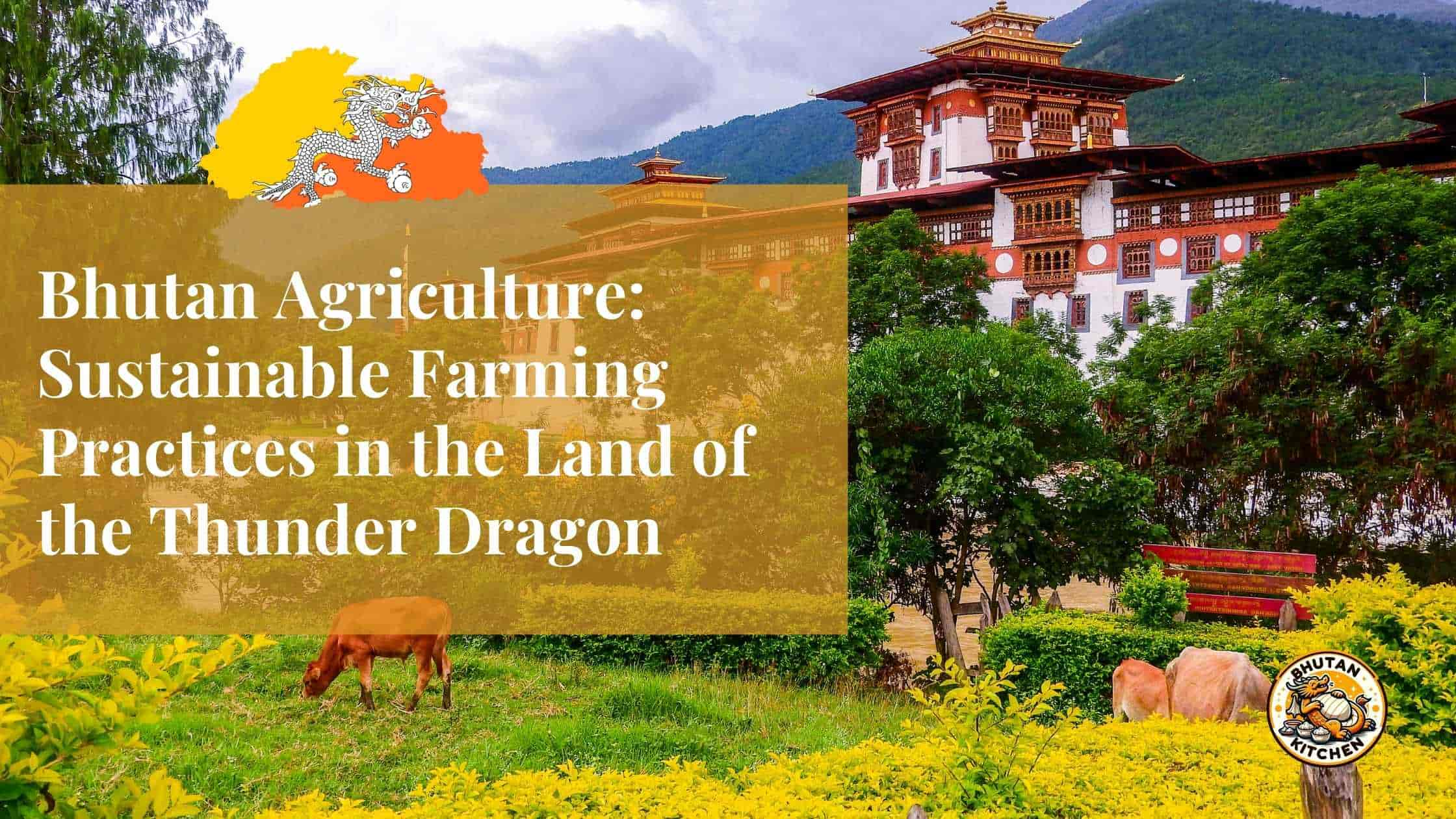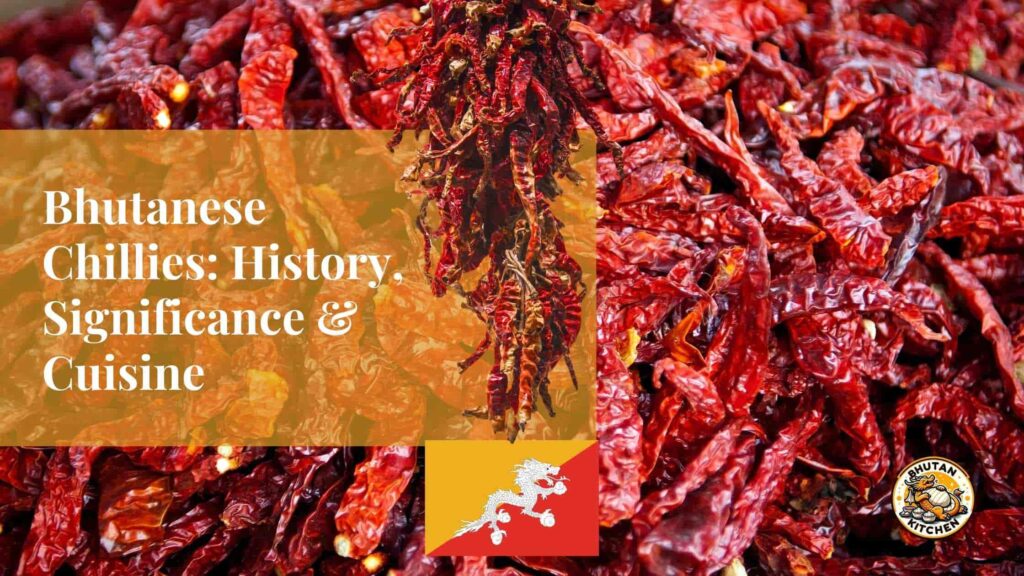Have you ever wondered how a nation can balance its agricultural needs with environmental preservation? In Bhutan, the answer lies in sustainable farming practices that not only produce food but also protect the breathtaking landscapes and rich biodiversity of this Himalayan kingdom. Known as the Land of the Thunder Dragon, Bhutan is often celebrated for its commitment to Gross National Happiness over gross domestic product, though agriculture remains a cornerstone of its economy, contributing 16.52% to the nation’s GDP. This unique approach extends to its agricultural sector, where over 95% of earning women and the majority of the rural population make their living from farming. With a growing global concern for environmental issues, Bhutan serves as an inspiring example of how agriculture can thrive in harmony with nature.
In this article, we will delve into the innovative and sustainable farming practices adopted in Bhutan that ensure food security while preserving the environment. From traditional techniques that have stood the test of time – dating back to 1500-2000 BC – to modern initiatives promoting organic farming, including Bhutan’s ambitious goal to become the world’s first 100% organic farming nation, the country’s agricultural story is one of resilience and respect for nature. The cultivation of staple crops like maize and rice, particularly the latter being the major staple crop, continues to sustain both the people and their traditions. Join us as we explore how this small nation is making a significant impact in the area of sustainable agriculture.
The History of Agriculture in Bhutan: Tradition and Innovation
The History of Agriculture in Bhutan
- Agriculture in Bhutan has a rich tradition that dates back centuries, but there is little evidence
- In the past, farmers relied on traditional farming methods handed down through generations.
- These practices focused on sustainability and coexisting harmoniously with nature.
Tradition and Innovation
- While traditional farming methods are still prevalent in Bhutan, there has been a shift towards embracing innovation.
- The government has introduced modern techniques and technologies to improve crop yields and efficiency.
- Farmers are now blending traditional wisdom with contemporary practices to create a sustainable agricultural sector in the Land of the Thunder Dragon.
Traditional Farming Methods in Bhutan
1. Terrace Farming: In Bhutan, farmers employ terrace farming to cultivate crops on steep mountain slopes. These terraced fields help reduce soil erosion and maximize arable land for cultivation. The meticulous construction of these terraces demonstrates the farmers’ sustainable approach to agriculture.
2. Crop Rotation: Farmers in Bhutan practice crop rotation to maintain soil fertility and prevent the depletion of nutrients. This traditional method involves alternating the types of crops grown in a particular field each season, allowing the soil to replenish its nutrients naturally. Crop rotation is a sustainable farming practice that promotes long-term agricultural productivity.
3. Organic Farming: Organic farming is prevalent in Bhutan, with farmers avoiding the use of synthetic pesticides and fertilisers. Instead, they rely on natural methods like composting, crop rotation, and integrated pest management to sustainably grow crops. This eco-friendly approach not only benefits the environment but also produces healthier, chemical-free produce for consumers.
The Role of Agriculture in Bhutan’s Gross National Happiness
- Agriculture plays a pivotal role in Bhutan’s Gross National Happiness, the country’s unique development philosophy that prioritizes holistic well-being over mere economic growth.
- By focusing on sustainable farming practices, Bhutan ensures the health of its people, environment, and economy for future generations.
- The agricultural sector in Bhutan not only provides food security but also contributes significantly to the country’s cultural heritage and biodiversity conservation efforts.
Sustainable Farming Practices in Bhutan
- Bhutan’s agriculture is primarily organic, with farmers using traditional methods and eschewing chemical pesticides and fertilizers.
- The government actively promotes agroecology and agroforestry to maintain soil fertility and prevent erosion, preserving the country’s pristine landscapes.
- Community-based farming initiatives, such as cooperatives and farmer groups, further enhance the sustainability of agricultural practices in Bhutan.
Organic Farming: The Backbone of Bhutan’s Agricultural Sector
- Organic farming is the cornerstone of Bhutan’s agriculture, focusing on sustainable practices that promote soil health and biodiversity.
- Farmers in Bhutan eschew chemical pesticides and fertilizers, opting instead for natural methods like crop rotation and composting.
- This commitment to organic farming has not only preserved the environment but also ensured the production of healthy, chemical-free crops.
In Bhutan, agriculture is not just a means of livelihood but a way of life deeply rooted in tradition and sustainability. The emphasis on organic farming reflects the country’s respect for nature and its commitment to preserving the land for future generations. By prioritizing sustainable practices, Bhutan’s agricultural sector continues to thrive, setting an example for the rest of the world to follow.
Water Conservation and Irrigation Techniques in Bhutan
In Bhutan, water conservation is a crucial aspect of sustainable agriculture. Farmers use traditional irrigation methods like terracing and channeling water from streams to ensure crops receive adequate water without waste. These techniques have been honed over centuries and work in harmony with the environment.
Additionally, innovative approaches such as drip irrigation systems are gaining popularity in Bhutan. This method delivers water directly to the roots of plants, reducing water usage significantly. By combining traditional wisdom with modern technology, Bhutanese farmers are able to cultivate their land sustainably, ensuring a bountiful harvest while preserving precious water resources for future generations.
Key Points:
- Traditional irrigation methods like terracing and channeling water from streams are used in Bhutan.
- Innovative techniques such as drip irrigation systems are becoming more prevalent.
- By blending traditional wisdom with modern technology, Bhutanese farmers achieve sustainable farming practices.
Livestock Management and Animal Husbandry Practices
Livestock in Bhutan are crucial for both sustenance and income generation. Farmers employ sustainable practices such as rotational grazing to ensure the health of their animals and the land they graze on. This method allows pastures to recover and reduces soil erosion.
The government of Bhutan promotes mixed farming systems, where livestock and crops are integrated to enhance productivity and sustainability. Farmers are encouraged to adopt improved animal husbandry practices, such as providing proper shelter, nutrition, and healthcare for their animals. This holistic approach ensures the well-being of both the animals and the environment they inhabit.
In Bhutan, traditional knowledge plays a significant role in livestock management. Farmers rely on centuries-old practices to raise healthy animals without compromising the ecosystem. This harmonious relationship between farmers and their livestock is a testament to the sustainable farming practices that have been passed down through generations.
Agroforestry: Integrating Trees and Crops for Environmental Benefits
- Agroforestry in Bhutan is a sustainable farming practice that involves the intentional integration of trees and crops on the same piece of land.
- By combining trees with crops, farmers can improve soil fertility, reduce erosion, and increase biodiversity.
- The presence of trees in agroforestry systems also helps sequester carbon dioxide from the atmosphere, making them a valuable tool in combating climate change.
In Bhutan, agroforestry has been practiced for generations, with farmers traditionally planting fruit trees alongside their crops. This integrated approach not only enhances the overall health of the farming system but also provides additional income opportunities through the sale of fruits and timber. By harnessing the power of trees to support crop production, Bhutanese farmers are not only ensuring food security for themselves but also contributing to the preservation of the environment for future generations.
Innovative Farming Techniques for High-Altitude Farming in Bhutan
- Terracing: One of the most prevalent techniques used in high-altitude farming in Bhutan is terracing. Terraces help prevent soil erosion on steep slopes and provide flat surfaces for cultivation. This method optimizes land use in mountainous regions where arable land is limited.
- Polyhouse Farming: Due to Bhutan’s cold climate and high altitudes, polyhouse farming has gained popularity. Polyhouses create a controlled environment for plants to thrive, protecting them from extreme weather conditions and pests. This innovative technique has improved crop production and quality.
- Agroforestry: Integrating trees and shrubs with crops in the same area is another innovative farming technique in Bhutan. Agroforestry systems provide multiple benefits such as soil conservation, improved biodiversity, and additional sources of income for farmers. This sustainable approach enhances resilience in high-altitude farming practices.
The Future of Agriculture in Bhutan: Challenges and Opportunities
Challenges and Opportunities
Challenges facing the future of agriculture in Bhutan include limited arable land due to its mountainous terrain, reliance on traditional farming practices, and a growing population demanding more food. These challenges require innovation and adaptation to ensure food security and sustainable practices.
Opportunities for the future of agriculture in Bhutan lie in harnessing technology to increase productivity, promoting organic farming practices to preserve the environment, and investing in education and training for farmers to enhance their skills and knowledge. Embracing these opportunities can lead to a more resilient and prosperous agricultural sector in the Land of the Thunder Dragon.
In conclusion, the future of agriculture in Bhutan holds both challenges and opportunities that require strategic planning and collective effort to ensure a sustainable and thriving farming sector. By addressing the challenges through innovation and seizing the opportunities through investment and education, Bhutan can continue its tradition of sustainable farming practices for generations to come.



